“Silo” Director/Executive Producer Morten Tyldum on Helming Rebecca Ferguson’s Sci-Fi Mystery
Apple TV+’s Silo, created by Graham Yost, is an ingeniously constructed sci-fi series that nevertheless opens with a shot worthy of any classic western—a Sheriff’s badge—and goes on to meld elements of that genre, along with police procedural and conspiracy thriller, in 10 satisfying episodes. The series’ claustrophobic setting, the titular Silo, serves as a character almost every bit important as Rebecca Ferguson’s resourceful, remorseful Juliet, an engineer plucked from the obscurity of the Silo’s lowest levels to take over for the last lawman, David Oyelowo’s Sheriff Holston, after he makes the fateful decision to follow his wife (Rashida Jones’ Allison) out of the Silo’s relentlessly rulebound safety for the toxic, ruined wastelands outside.
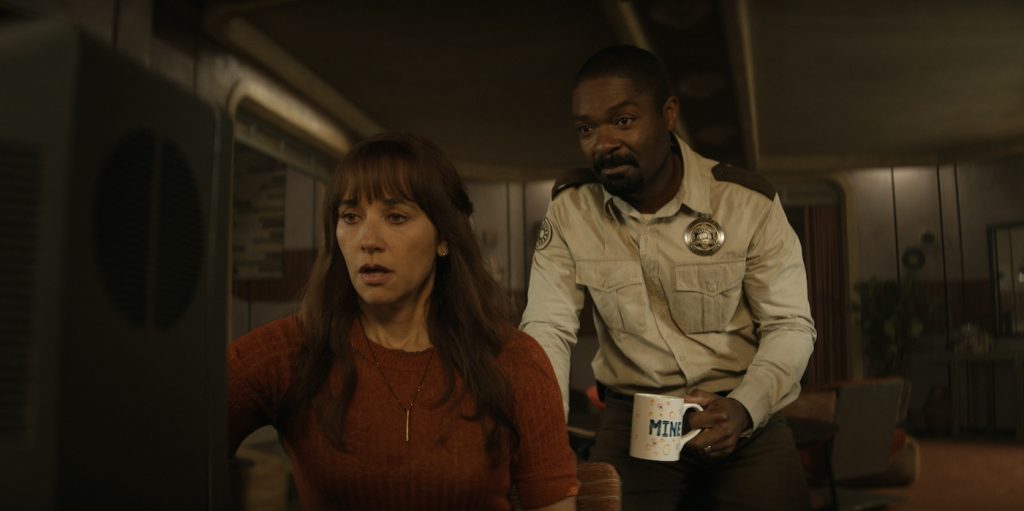
Helping shepherd the cast and crew through the first three episodes of the series was director and executive producer Morten Tyldum (The Imitation Game, Passengers), a director with plenty of experience crafting realistic sci-fi worlds, thrillers, and more. Tyldum and his talented crew built out the world of the Silo and its baffling retrofuturistic details—why are there no elevators, why do the computers look like first-generation Ataris, and what, on Earth, is up with those banished to “clean”?—with rigorous attention to detail and the rules of their world. Once Sheriff Holston makes his fateful decision to leave the Silo, and Juliet is called up from running the massive, spinning source of the bunker’s power to lead an investigation into a string of unusual deaths, the show confidently moves towards its satisfyingly surprising conclusion.
We spoke to Tyldum about the retrofuturistic design, the melding of genres, and why Rebecca Ferguson is sci-fi’s undisputed queen.
You directed episodes 1, 2, and 3—can you talk about establishing the world of Silo.
One of the things that drew me to Silo is I really loved Graham’s pilot, which is one of the best I’ve read. Apple reached out because they wanted a director to help with world-building, and it’s such a rare opportunity where we spent 10 months before we shot anything just figuring out how this world worked. We looked at everything from brutalist architecture to the old city of Barcelona. It was so fun to make the design based on practicality. If you’re going to make many silos and they’re this huge, you want building blocks that fit. Everything should be rounded, including doors and windows. The aesthetics are based on functionality. We wanted it to be a lived-in world. An old city, several hundred years old, so everything’s been used, reused, and repaired. There are limited resources. It’s a sci-fi show that looks back. You should watch Silo and in a few seconds recognize it.
There’s a similar aesthetic to the Mad Max world, where everything is beaten up, repurposed, taped or welded together. Even the computers in Silo are big and blocky. It brought me back to my Atari days…
Why is it like that? The watchers’ room has flat screens; why do they get high-tech stuff and no one else does? There’s a clear idea behind it, and it’s very linked to the purpose of the Silo. Why is there no elevator? Yes, it’s on purpose. The functionality of the Silo, the purpose of it, will be revealed later. Then you’ve got the giant digger, this giant machine that looks almost like a big dead iron spider. This obviously belongs to the future, yet at the same time, it’s so old. Computers are one by one, there’s no video or graphic art, they don’t have photographs, everything on the walls is like drawings or paintings. It was so fun—everything has a purpose; it’s coming from the book or how the silo would be created.
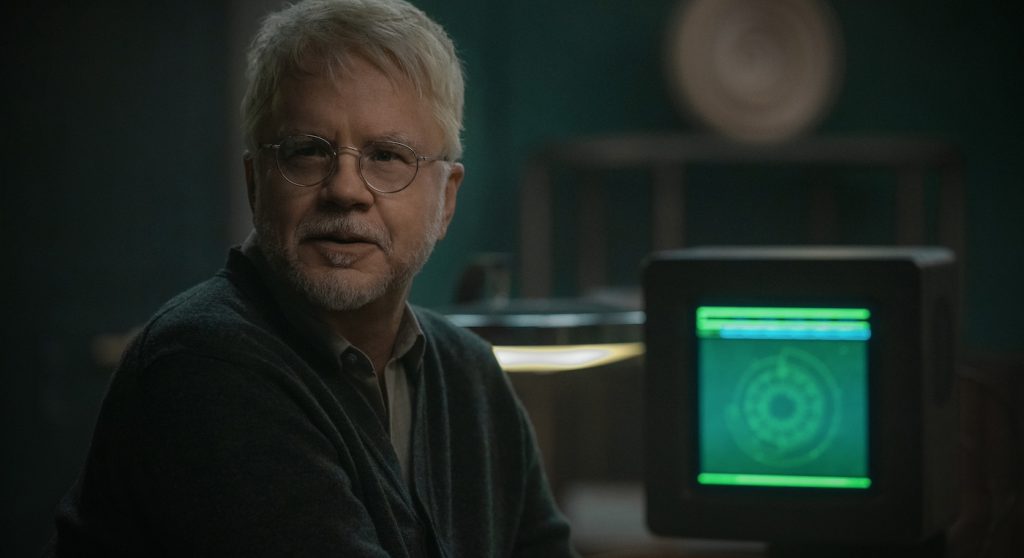
Can you walk me through the idea of people having to go clean when they’re banished from the silo and that view of the outside of the silo.
For them, it’s almost a religion. If you look at the cell, it’s more like a chapel, in a way. This is a society that has no history or knowledge of why they’re there. All they have is this one book called The Pact, which is the Laws of the Silo. It’s become cult-like, this idea of cleaning. For example, nothing in the silo can be white because the resources to make something white is too much except for the cleaning; that’s the one thing they have. They’re read the verdict, asked the clean, sent out, and you’re going to die, but you do this last sacrifice for the community. We wanted it to stand out. The only people dressed in white in the show are those who have to go clean.
I’ll admit I didn’t even notice the lack of white, but now it’s so obvious.
It’s every color you have there—how would you Mae blue? Brown? Red? So either it has to be stuff they had before they went down into the silo, or they have to make it there. This is why you hardly see any zippers; zippers are hard to make, you make buttons instead. All the textures, the wardrobe, and everything else have to be either things they had before or something they can create. I had such great department heads, and everybody was really drilling down on it. Does this feel Silo? This color green feels wrong, but this feels Silo.
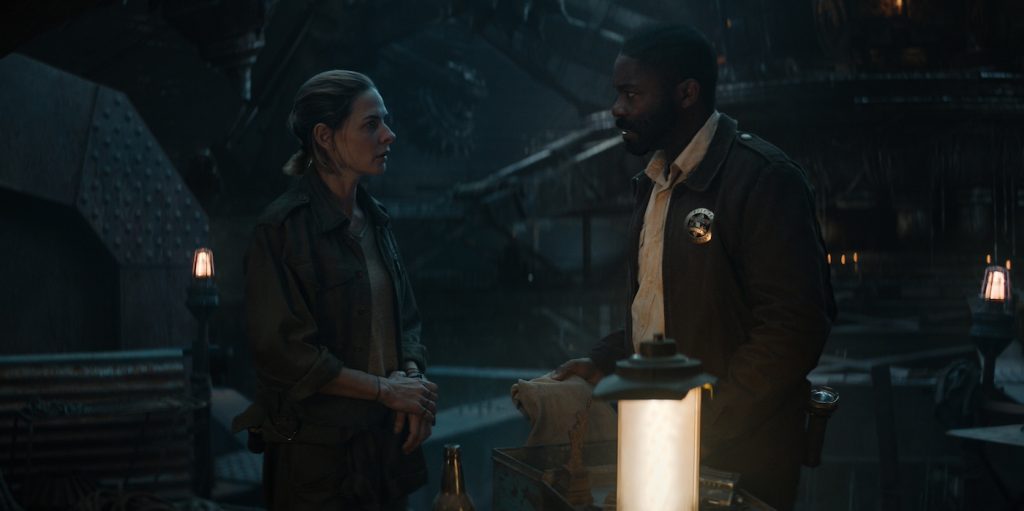
Let’s talk about this great cast, including Rebecca Ferguson, who is becoming a sci-fi legend given her incredible role in the Dune franchise.
She brings so much to the character. She’s so expressive. I had these ideas to have the camera be really close to her. I said this is something we should do more of, because first of all, it’s her story, and second, she’s so expressive, she’s so good at showing a lot while doing very little. She’s also great at action. She’s very physical; she embodies Juliet as someone who has all this strength and aggressiveness but simultaneously is scared, hurt, and a loner. She’s withdrawing and aggressive. I couldn’t be happier with Rebecca as Juliet.
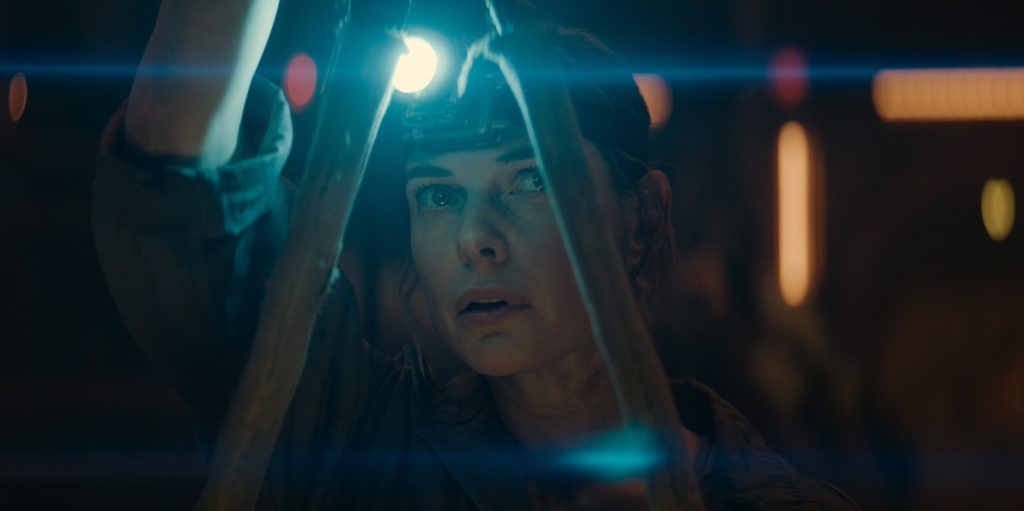
There’s also a bit of genre-melding, combining sci-fi and Western as David Oyelowo’s Sheriff Holston taps Rebecca Ferguson’s Juliet to replace him.
Very much. The show starts with the sheriff badge, which is very Western. That’s the first shot. It’s a western, a little bit of a noir mystery. It’s a meld of things. And the Silo is a character. When we shot this, I always wanted to remember the silo is always present. No long lens; the background should be sharp so you always see the silo. Sometimes you’re not following the actors, you’re just showing the silo. This is the true main character that you’re fighting against.
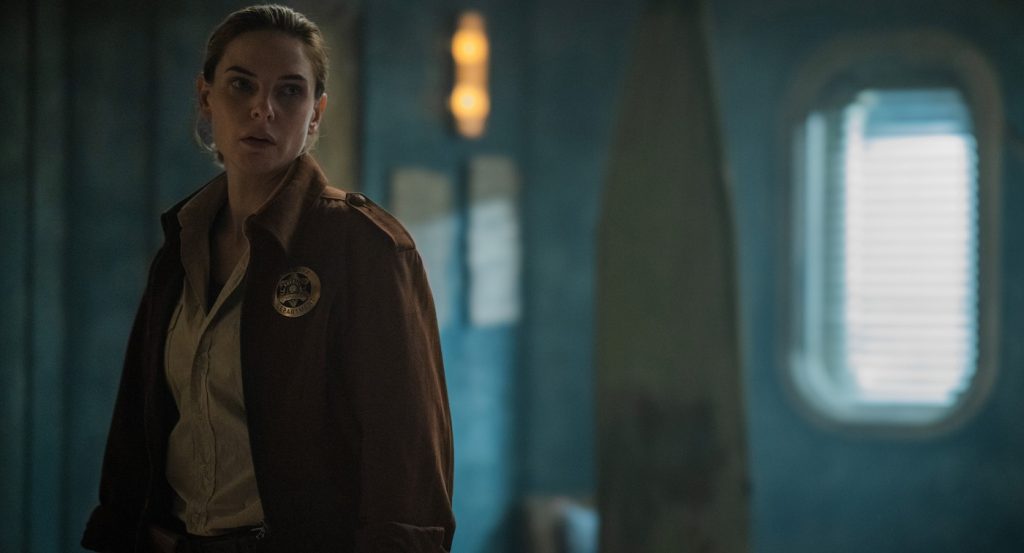
Tell me about building the set.
Gavin Boucquet, our production designer, built some of the biggest sets I’ve ever seen. You can literally get lost. There are alleyways and a giant stairway and floors; sometimes, it was a challenge to shoot it because you’re communicating with hundreds of extras. I was in one place, and you could barely see people because so much was happening so far away. When we were building it, we had a problem; there wasn’t enough steel in England. We took all the steel we could because we needed a foundation to hold so many people.
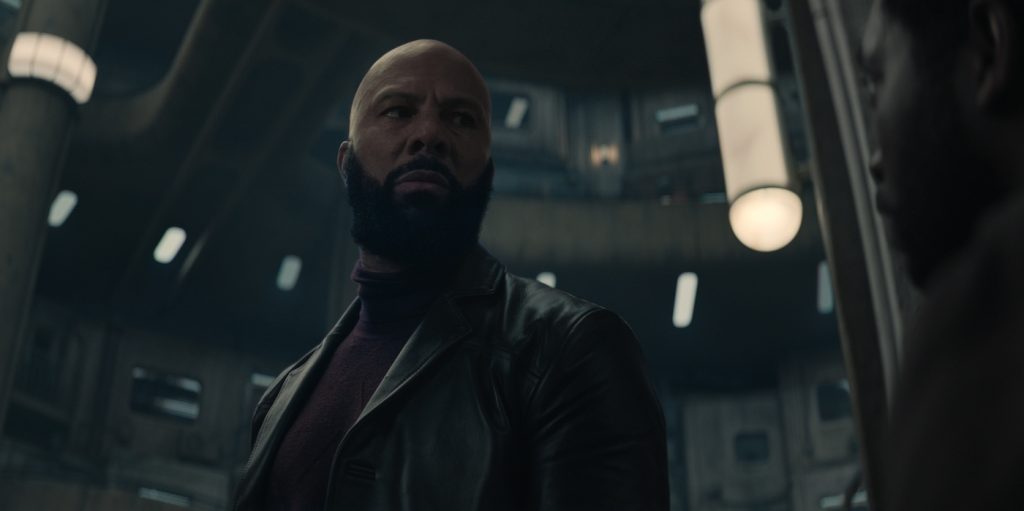
Where was the set created?
In Hoddesdon, an industrial area north of London. We built eight soundstages, and we had about 75 sets. Which is a lot for a TV show. The logistics are hard; you start out in one scene on one set with people walking out, and it’s supposed to continue, but the next set they’re walking into will be built in three months. It was a challenging shoot in many ways for everybody. We had one day outside. We shot David going out, Rashida going out, and Rebecca going out. The rest of the time, we were in the Silo.
Talk about putting your cast and crew into the world you were building.
This is why we didn’t want it to be a blue or green screen set. It was so easy for them to immerse themselves as actors because the set was so big and there were so many details. The set dressers and the prop people created so many details. The market stalls, the books, the posters, the maps, there are so many things the camera didn’t even pick up.
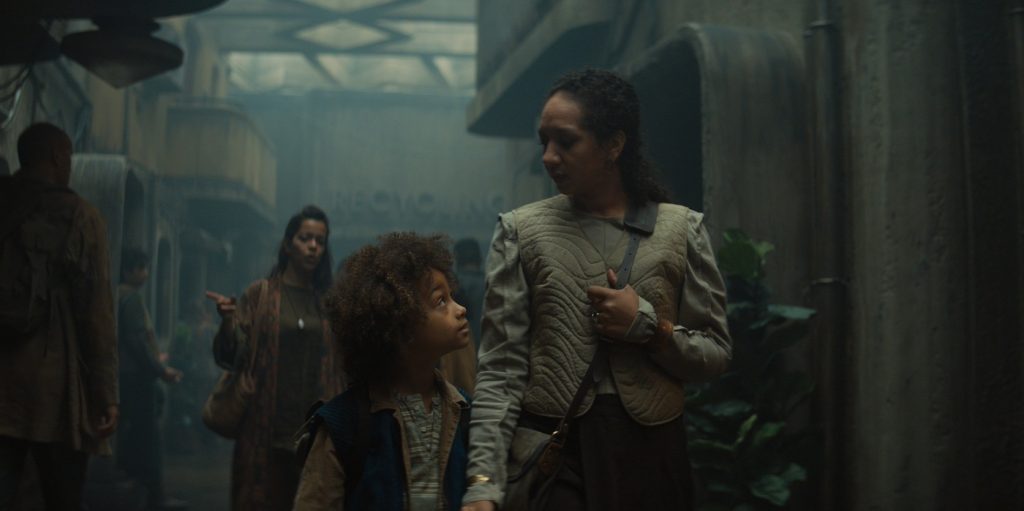
How much time was your crew given to create these sets?
Several hundred people, and it’s hard. A set might take four weeks to build, then three weeks to take down, and you shoot for two days. You have to make sure there’s always a set ready. The production people were amazing. The logistics of all this to keep it moving, it’s very complicated, it’s a huge machine to make this. If you want something done, get a film crew to do it. It just has to happen. There’s a deadline, we’re coming in a shooting that day. It’s part of the stress but also part of the fun. So many people are working to achieve the same thing. Everybody wants the show to be great.
Any favorite sequence you shot?
Shooting Rashida going out and the reactions to her. We played her on the big screen, a real screen, and we had all the footage of her going out and all these hundreds of extras there. I told them what was happening, the tradition of someone having to go out and clean. The extras were like people living in the silo, reacting to her, being emotional, then she stumbles and can’t get up. It was like, Jesus, this doesn’t look like 200 extras; it looks like people who actually live in the silo. You’d never get that with a giant blue screen. We shot that on day one, and it really felt like watching citizens of the silo reacting to Rashida going out and dying.
Silo season 1 is streaming on Apple TV.
For more stories on Apple TV+ series and films, check these out:
How the Latest VFX Techniques Immersed the “Masters of the Air” Actors in Battle
Brad Pitt and George Clooney Finally Reunite in First “Wolfs” Teaser
Featured image: Rebecca Ferguson and Chinaza Uche in “Silo,” now streaming on Apple TV+.



